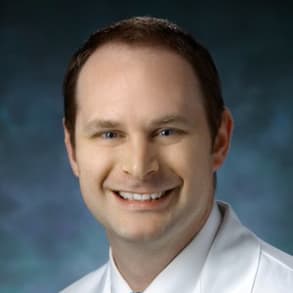Ryan Felling, director of the Johns Hopkins pediatric stroke program, discusses his latest research, which focuses on understanding the mechanisms of recovery following injury to the developing brain and improving outcomes after pediatric stroke. At least 30% of children who have a stroke will experience long-lasting moderate to severe disability. In this international stroke study, researchers collaborated to develop an expert consensus, identify knowledge gaps regarding pediatric stroke outcomes and propose a pathway for filling those gaps.
Hello, my name is Ryan Felling and I'm an Associate professor of neurology and pediatrics at Johns Hopkins. The focus of my research is to understand the mechanisms of recovery following injury to the developing brain. With the ultimate goal of improving clinical outcomes following pediatric stroke. From our prior work, we understand that at least 30% of Children who suffer a stroke are going to experience long lasting moderate to severe disability. What we don't understand is the exact pathway that Children take toward that final outcome. Recently, I collaborated with colleagues in the international pediatric stroke study in an effort that we titled the roadmap for the Assessment and Management of Outcomes in pediatric stroke. This effort was designed to develop an expert consensus, identifying knowledge gaps in the field of pediatric stroke outcome and proposing a pathway toward filling those gaps. Both clinical and laboratory research has shown us that a period of enhanced neuroplasticity following stroke allows for varying degrees of recovery. This results in a window of fairly rapid clinical improvement followed by a plateau. The shape of this recovery trajectory can be influenced by a number of different factors including the age of the patient. Many people assume that Children with their brains still developing, have wider windows of recovery that could lead to better clinical outcomes. But it's important to recognize that there are many developmental programs coming online in the brain throughout childhood that could create periods of enhanced vulnerability as well in Children. We utilize physical occupational and speech therapies to improve function following a stroke. And we also develop individualized education plans to maximize their ability to continue learning and developing emerging therapeutic modalities also offer the potential to improve clinical outcomes. But we need to know when to implement these therapies for them to be most effective in our road map. We emphasize the need for the systematic collection of data using validated and consistent measures such as the pediatric NIH stroke scale and the pediatric stroke outcome measure. We also highlight the need for long term psychosocial outcomes to understand how the impacts of a stroke change as Children age, as pediatric stroke is a rare condition. This is gonna require the collaborative effort of many pediatric stroke centers. An effort that will be facilitated by groups such as the international pediatric stroke study. Comprehensive recovery data will allow us to use the principles of precision medicine to develop optimized pathways for improving outcomes across the acute, the subacute and the chronic phases of stroke recovery. And ultimately help us in our mission to improve the lives of the Children that we treat. I would like to Thank my colleagues in the in the international Pediatric Stroke study, as well as Johns Hopkins Medicine for allowing me to do this work to help the Children that we care for. Thank you.
Related Presenters
